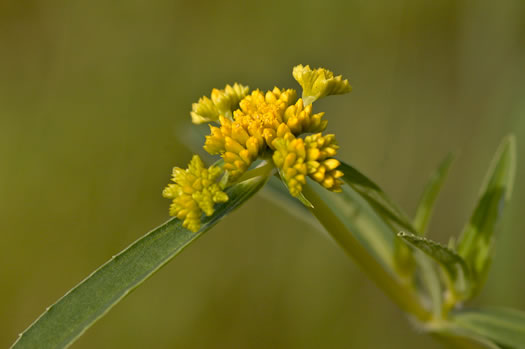Spermatophytes (seed plants): Angiosperms (flowering plants): Eudicots: Core Eudicots: Asterids: Campanulids: Asterales
WEAKLEY'S FLORA OF THE SOUTHEASTERN US (4/24/22):
Flaveria bidentis
FAMILY
Asteraceae
Go to FSUS key
Dig deeper at SERNEC, a consortium of southeastern herbaria.
SYNONYMOUS WITH
PLANTS NATIONAL DATABASE:
Flaveria bidentis
FAMILY
Asteraceae
SYNONYMOUS WITH Floristic Synthesis of North America. BONAP (Kartesz, 2021)
Flaveria bidentis
SYNONYMOUS WITH Flora of North America north of Mexico, vol. 19-20-21 (2006)
Flaveria bidentis
SYNONYMOUS WITH Manual of the Southeastern Flora (Small, 1933, 1938)
Flaveria bidentis
COMMON NAME:
coastal plain yellowtops
To see larger pictures, click or hover over the thumbnails.
Keith Bradley kab_f_bidentis_9280
July Miami-Dade County FL
Heads 20-100+ in tight subglomerules in scorpioid, cymiform arrays, per Flora of North America.
WEAKLEY'S FLORA OF THE SOUTHEASTERN US (4/24/22):
Flaveria bidentis
FAMILY
Asteraceae
SYNONYMOUS WITH
PLANTS NATIONAL DATABASE:
Flaveria bidentis
FAMILY
Asteraceae
SYNONYMOUS WITH
Floristic Synthesis of North America. BONAP (Kartesz, 2021)
Flaveria bidentis
SYNONYMOUS WITH
Flora of North America north of Mexico, vol. 19-20-21
Flaveria bidentis
SYNONYMOUS WITH
Manual of the Southeastern Flora (Small, 1933, 1938)
Flaveria bidentis
If a search such as "Carex leptalea var. leptalea" doesn't deliver the results you want, try "Carex leptalea".
Or, to minimize chances of a misspelling, try just "Carex le".
Less is more: If "pencil flower" doesn't deliver the results you want, try "pencil".


